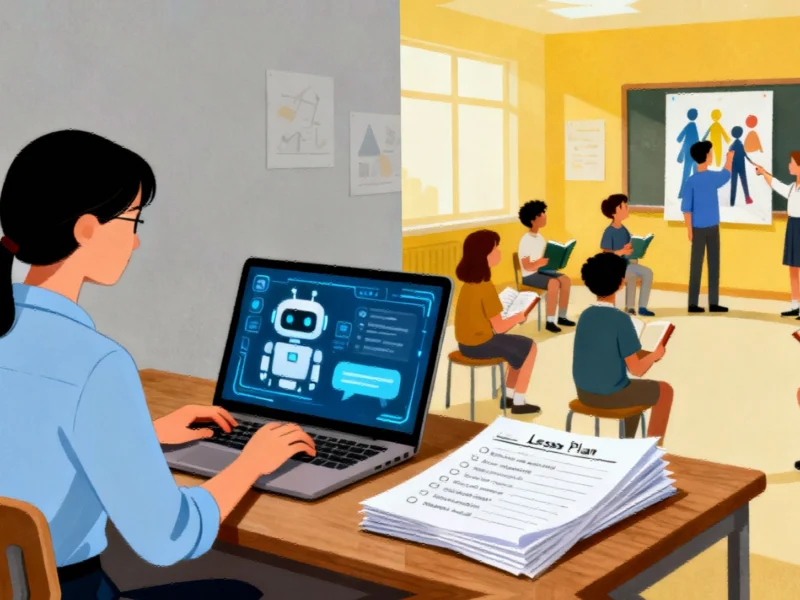The New Educational Economics
Across America’s school districts, a quiet revolution is unfolding as administrators and local governments confront a fundamental challenge: how to substantially increase teacher compensation despite tightening budgets and uncertain revenue streams. The solution emerging involves creative financial strategies, including strategic borrowing and budget reallocations, that signal both the urgency of addressing teacher pay and the complex fiscal realities facing public education.
Philadelphia’s Calculated Risk
Philadelphia’s recent three-year teacher contract exemplifies this trend. The agreement includes annual 3 percent raises, a $1,400 bonus, and enhanced parental leave benefits—achievements celebrated by educators and families alike. However, the district’s financial approach reveals the underlying strain: with $465 million in expected state payments delayed, officials authorized borrowing up to $1.55 billion to cover operations and the new contract. This decision, while necessary to avoid strikes and maintain educational continuity, carries significant long-term costs, including approximately $29.3 million in interest payments that divert resources from classroom needs.
The district’s chief financial officer framed the dilemma starkly: “Over 53% of our funding comes from the state budget. Every dollar spent on borrowing is a dollar not spent in classrooms.” This tension between immediate compensation needs and sustainable funding represents a microcosm of broader industry developments in public sector financial management.
National Pattern of Creative Financing
Philadelphia’s situation is far from unique. From Fairfax County to Baltimore County and Chicago, school systems are approving substantial compensation packages despite uncertain revenue pictures. The common thread involves districts making future commitments based on optimistic revenue projections or resorting to short-term financial instruments to bridge funding gaps.
In Fairfax County, officials adopted a FY2026 budget that includes historic 6 percent pay increases alongside program cuts and staffing adjustments to close a $121 million deficit. Superintendent Michelle Reid acknowledged the difficult trade-offs, noting that the budget represents a careful balance between compensation goals and educational program preservation.
These financial strategies reflect broader market trends in public finance, where organizations increasingly turn to sophisticated financial instruments to manage cash flow challenges.
The Technology Connection
While educational funding might seem distant from technological innovation, the financial pressures driving these compensation decisions parallel developments in other sectors. Just as schools are finding new ways to fund essential services, the technology sector continues to democratize access to complex tools through recent technology advancements that make sophisticated capabilities more accessible.
Similarly, breakthroughs in understanding complex systems—from educational finance to cutting-edge scientific fields—demonstrate how persistent investigation yields crucial insights. This parallels related innovations in research methodology that are transforming multiple disciplines.
Implementation Challenges and Operational Impacts
The logistical implications of these compensation changes extend beyond balance sheets. As districts commit to higher personnel costs, they must also manage the operational complexities of delivering education services. This challenge mirrors those faced by other sectors managing complex supply chains and distribution networks, such as the strategic logistics shifts occurring in retail and manufacturing.
Chicago’s ambitious 2025 contract illustrates the scale of these operational challenges. The agreement promises thousands of additional staff, class-size limits, restored libraries, and multi-year raises—all while the district contends with a budget shortfall measured in the hundreds of millions. District leaders describe the approach as both a moral imperative and practical strategy: investing in educators to strengthen the entire system.
The Human Dimension
Behind the financial calculations and policy debates lies a fundamental human reality: teaching remains a profession where dedication often outweighs compensation. Many educators routinely spend hundreds of dollars annually on classroom supplies, and significant numbers work second jobs to make ends meet. As one veteran Philadelphia teacher noted, “The profession is resilient, but that resilience is not a substitute for fair, predictable pay.”
This tension between professional commitment and financial reality finds parallels in other fields pushing boundaries of understanding, including cutting-edge research that explores the frontiers of human capability and technological integration.
Bipartisan Recognition of Educational Imperative
Perhaps the most encouraging aspect of this trend is its bipartisan nature. Leaders across the political spectrum have supported these compensation increases, recognizing that quality education requires competitive teacher pay. Union victories have frequently been matched by careful financial planning from superintendents and school boards determined to keep schools operational and effective.
The emerging consensus represents a significant shift in the education funding conversation. The debate is moving from whether teachers deserve better compensation to how communities can responsibly fund this commitment. This evolution in thinking reflects the kind of paradigm shift seen in other sectors experiencing transformative discoveries that fundamentally alter understanding of established systems.
Long-Term Implications and Sustainable Solutions
While the immediate focus has been on securing compensation increases, the longer-term challenge involves developing sustainable funding models. The current approach of borrowing against future revenues or making commitments based on optimistic projections creates structural vulnerabilities that could undermine the very educational improvements these raises are meant to support.
The comprehensive nature of these compensation changes is documented in detailed analyses of how districts are managing this complex balancing act between fiscal responsibility and educational quality.
Conclusion: Building Toward Educational Stability
The current wave of teacher compensation increases represents both progress and caution. Districts are demonstrating renewed commitment to valuing educators appropriately, but the financial mechanisms supporting these increases often involve calculated risks and future obligations. The ultimate test will be whether communities can transition from short-term financial strategies to sustainable funding models that support both competitive educator compensation and high-quality educational programming.
As these initiatives unfold, they offer a powerful reminder that investing in education requires both moral clarity and financial creativity—a combination that will determine whether these hard-won compensation gains translate into lasting educational improvement.
This article aggregates information from publicly available sources. All trademarks and copyrights belong to their respective owners.
Note: Featured image is for illustrative purposes only and does not represent any specific product, service, or entity mentioned in this article.



